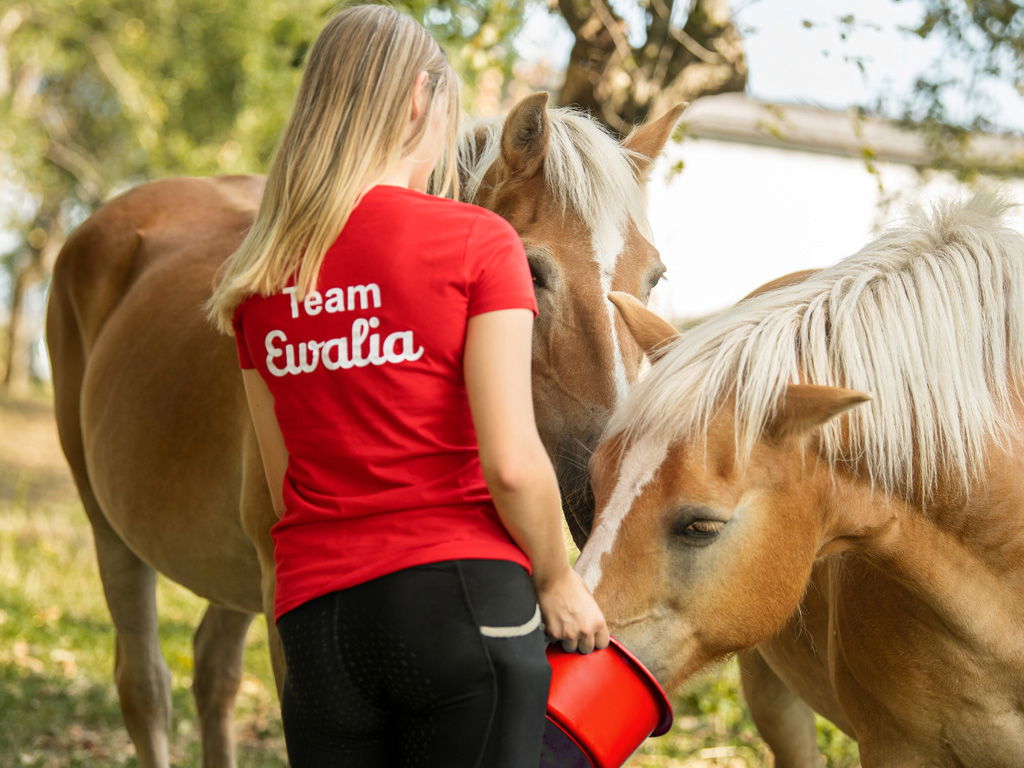Marsh mallow

Marsh mallow (Althea officinalis L.) - Proven relief for irritated mucous membranes in horses and dogs: marsh mallow and marsh mallow root promise fast relief from coughing and gastric mucosa irritations.
Distribution and origin of marsh mallow
The marsh mallow plant is found in many parts of central and eastern Europe. It prefers salty and limey soils but is also found in moist meadows and pastures and can grow up to 2 metres in height. It displays pink and sometimes white flowers from July to September. In the first year, the marsh mallow sends out a spindle-shaped white root which soon develops into a creeping root stock with branches as thick as fingers. In common parlance, the common mallow (Malva sylvestris) is sometimes mistakenly referred to as marsh mallow. Both plants belong to the family Malvaceae (mallow) but are of different genera.
In early times marsh mallow was used as a food, albeit a rather bland-tasting one. The roots were boiled and fried, and the flowers and leaves were used in soups and salads. Marsh mallow can be soaked, strained and mixed with other herbs to form a paste to make throat lozenges. The sticky goo was once also the basis for the confections known as marshmallows. The name "marsh mallow" comes from the plant's tendency to grow in wet, marshy areas.
In phytotherapy, use is made of:
- the leaves, collected and dried before and during flowering (Althaeae folium);
- the dried root (Althaeae radix) harvested in the second year;
- and, more rarely, the flowers (Althaeae flos)
Active substances and effects
Marsh mallow's soothing effects come from its high content of mucilage polysaccharides. The leaves have a high mucilage content (6%–10%), with levels being the highest just before flowering. The roots have a mucilage content of 10%–25%, depending on the time of harvest. They also contain pectins, starches and sugars.
Laboratory studies have shown that these mucilages form a well adhering, protective film on the surface of the mucosal epithelium and thus provide a predominantly physical benefit. When the mucous membranes are irritated, the ciliated cells of the epithelium are activated to accelerate the removal of foreign particles and microorganisms. This leads to symptoms such as coughing or stomach pain. The enveloping effect of the mucilage extracted from marsh mallow reduces local irritations by inhibiting the self-cleaning process of the ciliated cells and forming a protective layer which soothes the inflamed mucous membranes.
Water-based marsh mallow extract and the polysaccharide mixture obtained from it can also increase the metabolic activity of the keratinocytes in the epidermis and the connective tissue cells of the hypodermis. In-vitro experiments with cell cultures have shown that marsh mallow extracts can accelerate cell growth and stimulate cell and tissue regeneration, therefore a cell-specific effect on the mucosal cells can also be assumed.
Marsh mallow's anti-inflammatory effects have also recently been confirmed: even after its mucilages had been removed, marsh mallow root extract was able to reduce the risk of inflammatory processes through a clear inhibition of enzyme activities.
Application
Due to its soothing properties, marshmallow is beneficial for treating mucous membrane irritations in the mouth, throat and larynx and reduces coughing.
Marsh mallow can prevent further irritation in cases of slight inflammation of the stomach lining.
Caution: Marsh mallow should not be administered with other medications, as the mucilaginous substances can impair their absorption!
Quellen und weiterführende Literatur
- European Medicins Agency. (12. 07 2016). Von Committee on Herbal Medicinal Products: https://www.google.com/url?sa=t&rct=j&q=&esrc=s&source=web&cd=&ved=2ahUKEwiK9ObKno7tAhVcQEEAHcf1C4UQFjAAegQIAhAC&url=https%3A%2F%2Fwww.ema.europa.eu%2Fen%2Fdocuments%2Fherbal-monograph%2Ffinal-european-union-herbal-monograph-althaea-officinalis-l-radix_en abgerufen
- Hensel, A., & Sendker, J. (27. 10 2016). Eibischwurzel. Deutsche Apotheker Zeitung, S. S.52. Von https://www.deutsche-apotheker-zeitung.de/daz-az/2016/daz-43-2016/eibischwurzel abgerufen
- Medizinalpflanzen. (2020). Von http://www.medizinalpflanzen.de/systematik/6_droge/althae-r.htm abgerufen













